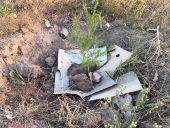
 2
2










List of Bryant RedHawk's Epic Soil Series Threads We love visitors, that's why we live in a secluded cabin deep in the woods. "Buzzard's Roost (Asnikiye Heca) Farm." Promoting permaculture to save our planet.














Josh Garbo wrote:Do you have any ideas for productive crops that would do well next year in fairly marginal soil (leaf crops perhaps)?












 1
1




Josh Garbo wrote:Thank you Dr R, I will be looking into the manure and fungal aspect. Do you have any ideas for productive crops that would do well next year in fairly marginal soil (leaf crops perhaps)?
List of Bryant RedHawk's Epic Soil Series Threads We love visitors, that's why we live in a secluded cabin deep in the woods. "Buzzard's Roost (Asnikiye Heca) Farm." Promoting permaculture to save our planet.




















List of Bryant RedHawk's Epic Soil Series Threads We love visitors, that's why we live in a secluded cabin deep in the woods. "Buzzard's Roost (Asnikiye Heca) Farm." Promoting permaculture to save our planet.




 4
4





|
I once met a man from Nantucket. He had a tiny ad
The new permaculture playing cards kickstarter is now live!
https://www.kickstarter.com/projects/paulwheaton/garden-cards
|




